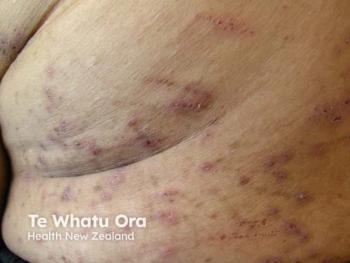
Broad-spectrum knowledge: Understanding sunscreen efficacy testing, rating
The proposed new rules for sunscreens issued by the FDA have focused attention on understanding the different methods available for assessing UVA protection. Considering the limitations of various tests and real-world product use patterns, it is important that a sunscreen demonstrate both high levels of in vivo and in vitro protection against UVA as well as a high SPF level.
Key Points
National report - With new federally mandated labeling requirements for sunscreen products on the horizon, it is important for dermatologists and consumers to understand the various methodologies used for testing and rating sunscreen efficacy, as well as their limitations.
Researchers from industry have outlined a "primer" for understanding information about UVA protection in sunscreens.
"Sunscreen testing is a complex area and not as straightforward as it may appear at first glance. In addition, different systems for rating sunscreen protection are in use across various regions of the globe, and so, consumers and physicians may be left confused about their meaning and what are the best options for achieving broad-spectrum UV protection," says Theresa Chen, Ph.D., research fellow, R&D/Scientific Affairs, Neutrogena Corp., Los Angeles.
In addition, UVA protection may be indicated by the phrase "broad spectrum" on the label.
The role of UVA
Recognizing the role of UVA exposure in causing chronic, subclinical inflammation and photodamage, the proposed Food and Drug Administration (FDA) rule requires sunscreens to use a four-star system to rate levels of UVA protection as low, medium, high or highest.
The various levels are based on results of in vitro and in vivo testing, and criteria for both tests must be satisfied for a product to claim a particular level of UVA protection.
The in vitro test for the star system is a modified Diffey UV "balance" test. It measures the ratio of UVA I absorbance relative to the average UV absorbance across the entire spectrum, and as a strength, this method accounts for photostability.
A higher ratio thus reflects more equal absorption of UVB and UVA, but does not mean higher UVA protection. That is addressed by the in vivo test based on a modified persistent pigment darkening (PPD) test.
The FDA is proposing that in vivo UVA protection of water-resistant products be evaluated after a period of water exposure. Various other methods of in vitro testing exist, including determination of the critical wavelength and the in vitro UVA protection factor (PFA-COLIPA).
The critical wavelength is an instrumentally derived metric based on determination of the area under the total UV absorbance curve. It is defined as the wavelength at which 90 percent of total UV absorbance occurs.
"Straightforward and easy to perform, this method is incorporated in the American Academy of Dermatology recommendations on sunscreen testing. According to these recommendations, a sunscreen should have a critical wavelength of 370 nm or greater to qualify as providing broad-spectrum protection," Dr. Chen tells Dermatology Times.
However, Dr. Chen and colleagues say the critical wavelength mainly reflects the breadth of a sunscreen's protection, and not the height or amount of absorbance at particular wavelengths.
Mathematically, therefore, two sunscreens can have the same critical wavelength but very different profiles in their ability to absorb different UV wavelengths.
Sunscreens with a relatively low SPF rating of 15 or 30 are more likely to fulfill the in vitro test criterion for achieving a four-star rating than sunscreens with higher SPF levels. This can lead to manufacturers de-emphasizing SPF in favor of UVA protection. From a clinical perspective, a sunscreen should ideally offer both a high SPF level and high UVA protection, Dr. Chen says.
"High-SPF sunscreens are needed to assure that consumers who are most vulnerable to sun damage achieve sufficient protection. Those individuals include people with type I skin or photosensitivity disorders. However, there is also relevance for the general population considering that people routinely underapply sunscreen," she says.
Dr. Chen cites a recent study by Farschou and Wulf (Br J Dermatol. 2.007;156:716-719), who showed that application of half of the recommended amount of a sunscreen results in protection equivalent to the square root of the SPF rather than just half of the SPF.
"We feel that it is important for the public in general to use sunscreens with a high SPF rating >50, to ensure they benefit with sufficient protection during the time of sun exposure, even if they underapply the product," Dr. Chen says.
However, it is also important to know that the SPF rating is influenced by UVA, and the SPF of a sunscreen can be significantly increased by adding UVA protection.
"It is important that manufacturers not compromise UVB protection to accommodate additional UVA protection," Dr. Chen says.
Newsletter
Like what you’re reading? Subscribe to Dermatology Times for weekly updates on therapies, innovations, and real-world practice tips.


















